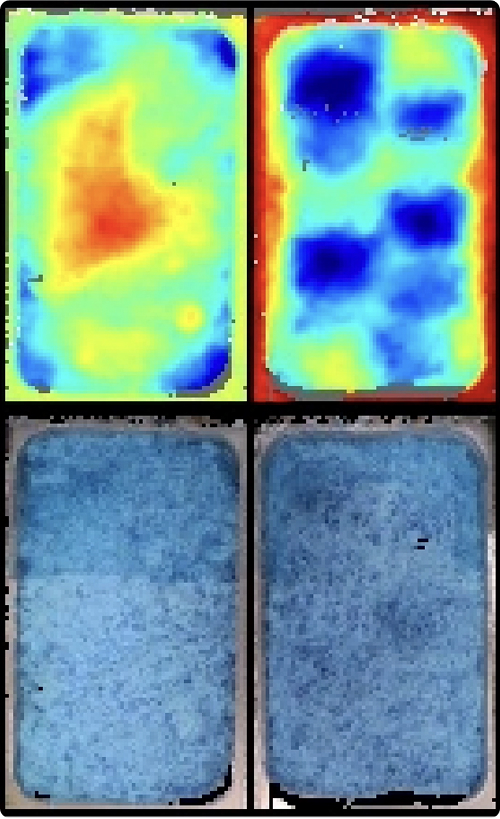
How Cafe Spice Boosted Output by 2-3x With Chef Robotics
Using Chef’s robots, Cafe Spice was able to boost output by 2-3x, ease labor shortage constraints, and lower food giveaway by 67%.

About Cafe Spice
Cafe Spice is a food manufacturer specializing in Indian and South Asian-inspired meals. It manufactures ready-to-eat meals under the Cafe Spice brand, available at major retailers like Whole Foods, Kroger, and Costco. The company also supplies private-label and co-manufactured products to major retailers, foodservice providers, and institutional customers across the United States. In 2024, Cafe Spice opened a new production facility in Beacon, New York, expanding its manufacturing capacity to meet increased demand from its growing network of partners and customers.

“One of our biggest challenges has been staffing. For the past several years, staffing was very difficult due to many different hiring limitations that were occurring in the industry, which made it quite challenging for us to be able to continue scaling and expanding.”
Challenges
Before using Chef, Cafe Spice found it difficult to automate its high-mix production environment. The company was producing 12 different curry entrées, resulting in even more stock keeping units (SKUs) when accounting for portion sizes and tray types. Traditional machines can’t consistently portion this many ingredients or meet a short enough changeover time between SKUs. Cafe Spice’s inability to automate its production lines caused the following issues:
The manual production setup—using tables instead of conveyors, with workers manually shifting bowls down the line—often capped throughput at around 12 entrées per minute. This limited facility output made it difficult for Cafe Spice to keep up with growing demand, scale its operations, and grow revenue. Even with the adoption of conveyors, Cafe Spice felt that worker pace was limiting throughput.
Following the COVID-19 pandemic, New York became a more challenging environment to hire and retain workers. Cafe Spice faced labor shortages and rising overhead costs—including an increased minimum wage and turnover—which challenged its ability to meet production demand and maintain profit margins.
Cafe Spice’s high quality standards and strict requirements for placement and presentation led to significant food giveaway. To avoid underserving customers, line workers often overportioned meals. Workers needed to fill Cafe Spice’s two-compartment trays to the top to meet the target weight, which frequently led to spillage or spillover of curry into rice and required another worker to wipe trays at the end of the line.
Chef’s approach
To address these challenges, Cafe Spice decided to invest in Chef’s AI-enabled robots along with a conveyor system. Unlike traditional automation, Chef robots can flexibly adapt to various ingredients, recipes, portion sizes, conveyors, and trays while supporting quick changeovers. In addition to accurate placement, Chef robots collect precise weight data for every deposit to achieve consistency and reduce giveaway. Finally, the Chef team developed a new utensil designed specifically for curries to minimize the risk of spilling and consistently handle meat chunks suspended in a saucy base.
- ML-based perception
- Modular and portable
- Collaborative
- Flexible
- Real-time conveyor integration
- Fully deployed in two weeks
- <10-min. changeovers


“The data insight with the Chef robots has been transformative. Previously, we took a sample every 30 minutes. Now, we have granular insight into every deposit in every tray, which allows us to make better business decisions and adjustments where warranted.”
Impact
Cafe Spice has seen significant output, yield, and worker productivity improvements using Chef robots. After deploying four robots initially, the company quickly deployed four more to partially automate two production lines. Now, Cafe Spice is actively onboarding eight more robots, fully automating both production lines end-to-end with a total of 16 robots.
Before using Chef, each of Cafe Spice’s production lines produced 10-15 trays per minute. With Chef robots and the new conveyor system, the company now achieves a throughput of up to 30 trays per minute on average, resulting in 2-3 times higher output. The increased throughput has allowed Cafe Spice to consolidate some of its production lines, resulting in millions of dollars in additional revenue potential.
Previously, Cafe Spice required 8-10 workers per production line for its meal assembly process. With Chef, the number of dedicated workers on each line has decreased to 3-4 people, delivering a 60% increase in labor productivity on average. Cafe Spice leverages the freed-up workers in other areas of its operations, which had previously remained understaffed.
The acceptance rate for Chef-made meals is 91%, compared to a 75% acceptance rate for worker-made meals. These consistency improvements directly affect Cafe Spice’s overall product quality, as Chef robots are able to accurately place ingredients into the company’s two-compartment trays. They have also allowed Cafe Spice to reduce food giveaway by 67%.

Download the in-depth case study
Read the full case study, including video interviews, detailed plots, data insights, and a comprehensive overview of Chef’s business approach.






